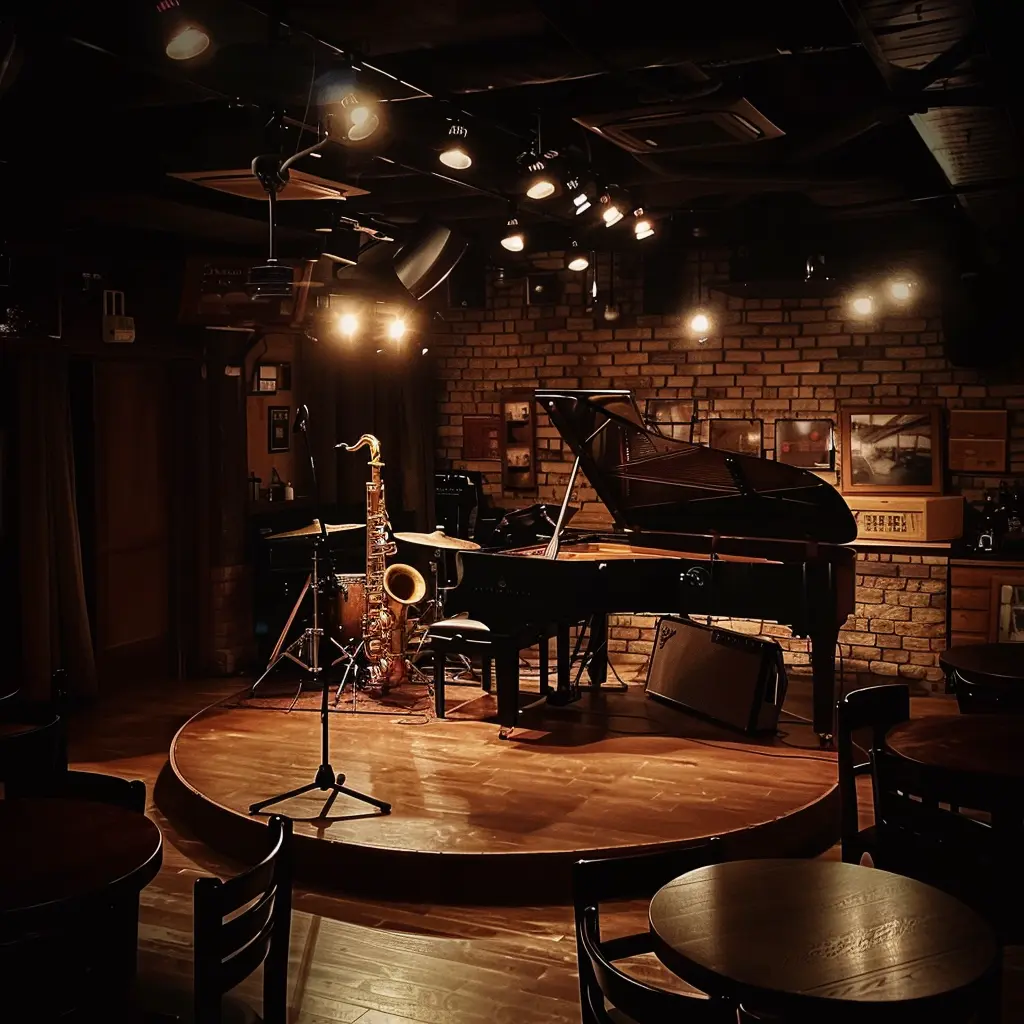The film is an exciting adaptation of the widely popular manga by Shinichi Ishizuka, featuring music by the world-renowned jazz pianist Hitomi Uehara.
Follow the inspiring journey of Dai Miyamoto, a young jazz enthusiast who dreams of becoming the world’s best jazz player. He moves to Tokyo to form a trio and perform at ‘So Blue,’ Japan’s premier live music club. The film also chronicles the challenges and triumphs of his band of three young jazz players, making it a story that will resonate with all music lovers.
Prepare to be captivated by the intense performance scenes and the high-quality music in this film. The passion and dedication of Dai and his bandmates are heartwarming, making their journey a joy to watch. Even if you’re not a jazz enthusiast, the breathtaking live performance scenes will leave you spellbound.

The original work was described as “a cartoon you can hear the sound of.”
It is serialized in Big Comic, and as of April 2023, the series has sold more than 11 million copies. In addition to the human drama, the manga has been called “a manga where you can hear the sound of the music” for its excellent depiction of musical performances. The high hurdles that had to be overcome in adapting the original work into an animated film have been successfully overcome, and the content will satisfy fans of the original work.
The quality is very high and satisfying, even if you only look at the LIVE scenes released to the public.
Some may also be concerned about the voice actors since it is an animated film. The voices of JASS, Hiroki Yamada, Shotaro Mamiya, and Amane Okayama are all excellent and bring a lot of excitement to the film.
JASS is an excellent depiction of jazz, a genre that can seem intimidating and challenging. We recommend that you prepare headphones or speakers and watch the film in a good environment.
A story that successfully extracts the essence of the original work
This work compiles the contents up to volume 10 of the original work, and the key scenes are well-connected and summarized. Although the hometown Sendai section, which depicted the kind of person Dai is and how he faces the saxophone, was cut, the overwhelming saxophone, practice, and reminiscence scenes illustrate that Dai is a character with terrifying passion and strength.
It may be a very personal comment, but the scene at the end of the book, where the master Yui talks about his past grandeur in the style of a bonus track, was a delightful scene for me as a fan of the original work.
Three-way human drama
The three members of JASS weave their dramas, which add depth to the work. Dai has left his hometown and is moving forward with a passion that overwhelms others: Yukina, who began playing the piano at an early age and has outstanding technique, and Tamada, Dai’s classmate who jumped into the world of jazz with no experience.
The stories of these three people have their charms. Yukimasa has extraordinary talent but hits a wall and struggles to overcome it. The gap between his gorgeous looks and atmosphere is lovely. Tamada, who portrays a glamorous campus life that doesn’t work out, is fascinated by Dai’s passion and desperately tries to catch up with him. You can’t help but think, “Hang in there, don’t lose.
And then there is Dai, who influences both of them and faces jazz with a passion that seems almost insane. This combination creates a synergy that makes for a fascinating ensemble drama.
The sub-cast, including Akiko, who rents out the jazz bar where JASS practices, and Taira, the manager of one of Japan’s best live houses, also add to the story, making this an excellent film not only as a music film but also as a human drama.
Dedicated music production
The music is produced by Hitomi Uehara, a jaspianist who has received numerous music awards and international acclaim. The original songs that appear in the production are lovely.
She also played the snow prayer, and when recording it, he played the piano while imagining how she cared for Tamada. Baba Tomoaki, who played the saxophone for Dai, was conscious of giving 100% like Dai, not his usual playing style. He was even told that he was too good and not like Dai and was particular about details.
I was surprised at how cool Pachelbel’s Canon, used in the practice session under the bridge with Tamada, can be played in jazz.
Tamada’s line, “I love jazz,” was also compelling and brought me closer to jazz at once.
The CG of the performance scene may be different from everyone’s liking.

For the performance scenes, motion capture was used to create CG of the performers’ movements. Director Yuzuru Tachikawa said that the original author, Shinichi Ishizuka, requested that the film not become a PV.
As requested, the film depicts more than just the three musicians playing. Still, the combination of the dynamic camera work and the wonderful music with the animated direction of the piano and saxophone distorting, collapsing, and vividly colored makes the performance scenes a masterpiece.
However, the everyday scenes are in 2D, and only the performance scenes switch to CG, which is a bit angular and may initially be confusing for many viewers.
However, as the film progresses, you will get used to it, and by the end, you will feel no discomfort with the CG. The CG has been pointed out in search suggestions and review sites, but it would be a waste not to see this film because of that.
Satisfying work as a music film
This film is a very authentic music film, and the ensemble drama and performance scenes of the three performers make it a highly satisfying work. Watching them face music with dedication and challenge themselves will give you a passionate message that will inspire you to do something.
Although not a movie, a novel titled “Piano Man: ‘BLUE GIANT’ Story of Snow Prayer” is also available, which depicts BLUE GIANT from a different perspective from the manga and the movie. If you are interested in the story, read it while listening to the soundtrack.








